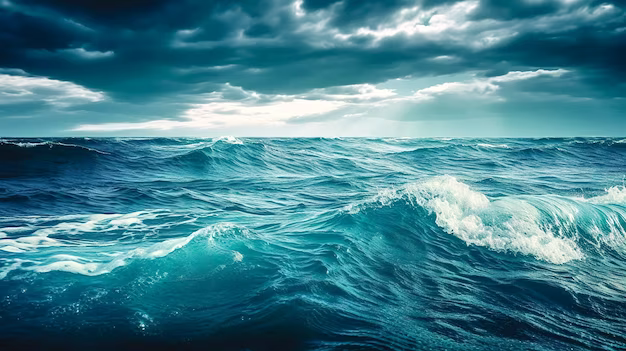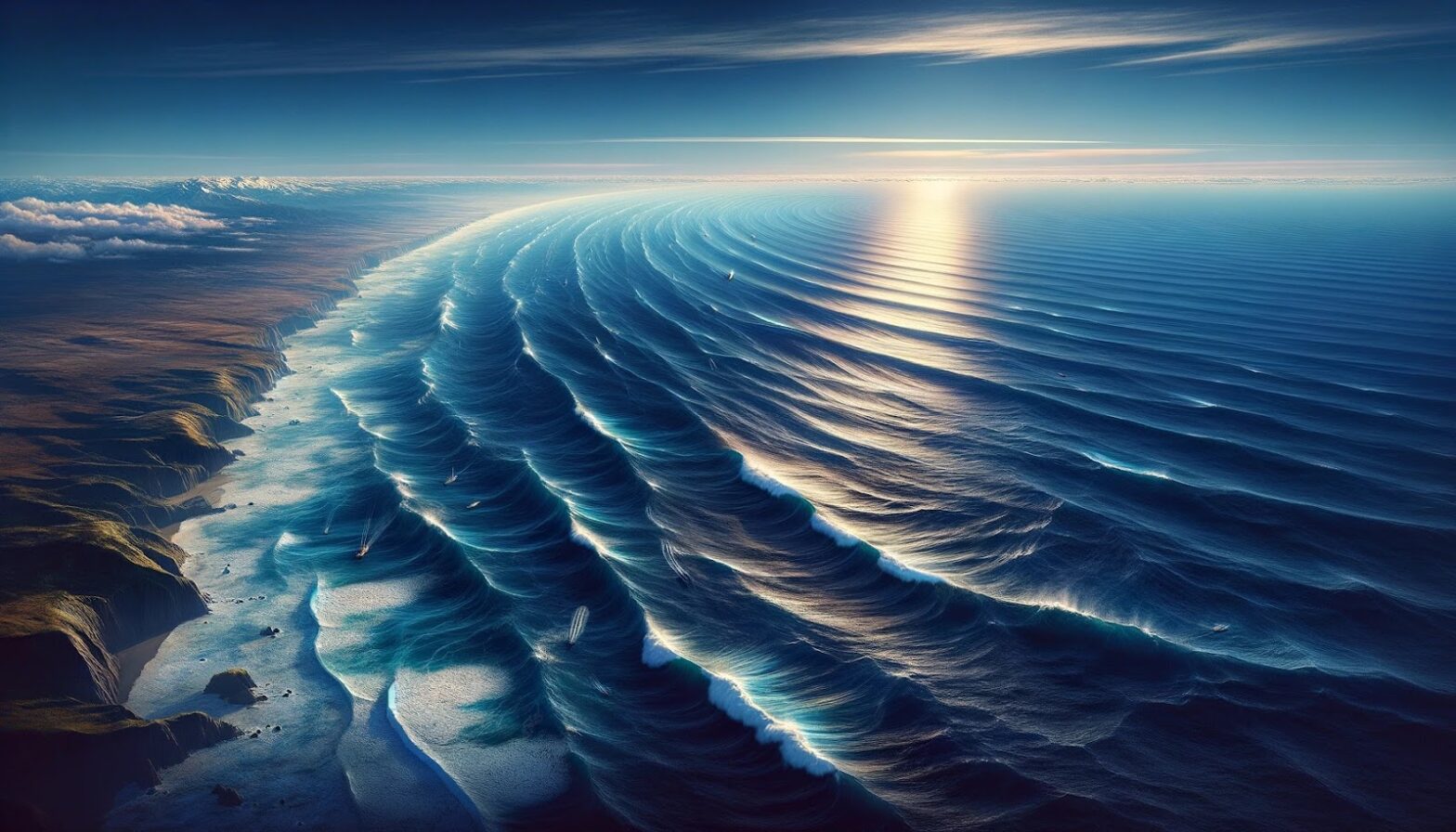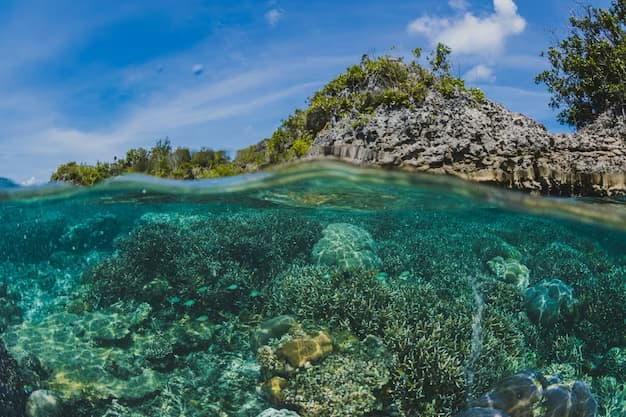The Pacific Ocean, the largest of the world’s five oceans, is a place of immense majesty, mystery, beauty, and wonders. Its vast expanse has captivated explorers, scientists, and adventurers for centuries. From its fascinating etymology to its sheer size and ecological significance, the Pacific Ocean holds a wealth of captivating information waiting to be discovered. In this article, we delve into the depths of the Pacific, uncovering its secrets, exploring its diverse marine life, and understanding its global importance.
The Origin and Etymology of the Pacific Ocean
The Meaning Behind the Name
The word ‘pacific’ finds its origins in the Latin word ‘pace,’ meaning ‘speed’ or rhythm. In its English form, it signifies calmness or placidity. This name is believed to have been given by the Portuguese explorer Ferdinand Magellan, who first crossed the ocean in 1520. It is likely that Vasco de Balboa, who is credited with the European discovery of the Pacific Ocean, was accustomed to the choppy and cold waters of the Atlantic Ocean. Little did he know that the Pacific generates the largest swell waves and some of the most terrifying storms on Earth. The name “Pacific” is translated from the original Portuguese name, Mar Pacifico, and shares its etymology with the English word due to their common ancestor in Latin.
Unveiling the Discovery
The Pacific Ocean was officially discovered by Vasco de Balboa sometime in the 16th century during his numerous voyages of exploration. His sighting of the great ocean marked a significant moment in history, as it opened up new possibilities for trade, colonization, and further exploration. The discovery of the Pacific Ocean reshaped the way Europeans viewed the world and paved the way for future expeditions and discoveries.
Comparison of the World’s Five Oceans
| Ocean | Area (square kilometers) |
|---|---|
| Pacific | 165,250,000 |
| Atlantic | 106,460,000 |
| Indian | 70,560,000 |
| Southern | 20,330,000 |
| Arctic | 14,060,000 |
The Vast Expanse of the Pacific Ocean
A Sizable Piece of Real Estate
The Pacific Ocean covers a territory greater than 165 million square kilometers, making it the largest ocean on Earth by a significant margin. Its expansive reach encompasses various seas such as the Bali, Coral, East China, Okhotsk, South China, Tasman seas, as well as the Gulf of Tonkin and the Gulf of Japan. To put its size into perspective, the Pacific Ocean is larger than all the other bodies of water on Earth combined. This vast expanse not only influences global weather patterns but also supports a rich diversity of marine life, making it a critical component of the planet’s ecological balance.
The Pacific Ring of Fire
One of the most striking features of the Pacific Ocean is the presence of the Pacific Ring of Fire, a horseshoe-shaped area encompassing the edges of the Pacific Plate. This region is known for its high volcanic and seismic activity, housing approximately 75% of the world’s active and dormant volcanoes. The Ring of Fire is responsible for frequent earthquakes, tsunamis, and volcanic eruptions, shaping the geological landscape of the surrounding countries and impacting global tectonic dynamics.
Major Seas within the Pacific Ocean
- Bali Sea;
- Coral Sea;
- East China Sea;
- Okhotsk Sea;
- South China Sea;
- Tasman Sea;
- Gulf of Tonkin;
- Gulf of Japan.

The Biodiversity and Ecosystems of the Pacific Ocean
A Haven for Marine Life
The Pacific Ocean is home to an incredibly diverse array of marine species, ranging from microscopic plankton to majestic whales. Its warm tropical waters, vibrant coral reefs, and nutrient-rich currents create ideal conditions for supporting a wide variety of aquatic life. The ocean’s biodiversity plays a crucial role in sustaining global fisheries, providing livelihoods for millions of people, and contributing to the overall health of the planet’s ecosystems.
Threats to Marine Biodiversity
Despite its ecological significance, the Pacific Ocean faces numerous threats, including overfishing, habitat destruction, pollution, and climate change. These factors pose significant challenges to the delicate balance of marine ecosystems, leading to the decline of key species, loss of biodiversity, and disruptions in food chains. Conservation efforts and sustainable management practices are essential to safeguarding the long-term health of the Pacific’s marine environments and the livelihoods that depend on them.
Endangered Species in the Pacific Ocean
| Species | Conservation Status |
|---|---|
| Leatherback Turtle | Critically Endangered |
| Blue Whale | Endangered |
| Hawaiian Monk Seal | Critically Endangered |
| Galapagos Penguin | Endangered |
| Pacific Bluefin Tuna | Vulnerable |
The Economic and Geopolitical Significance of the Pacific Ocean
A Hub for Global Trade
The Pacific Ocean serves as a vital conduit for international trade, connecting major economies across Asia, the Americas, and Oceania. Its extensive network of shipping routes facilitates the transportation of goods, fuels economic growth, and fosters international cooperation. The strategic location of key ports and maritime chokepoints within the Pacific Ocean contributes to its status as a linchpin of global commerce and geopolitical influence.
Busiest Ports in the Pacific Ocean
- Port of Shanghai, China;
- Port of Singapore;
- Port of Hong Kong, China;
- Port of Busan, South Korea;
- Port of Los Angeles, United States.
Conclusion
In conclusion, the Pacific Ocean stands as a testament to the awe-inspiring power of nature and the interconnectedness of our planet’s diverse ecosystems. From its historical significance to its ecological importance and economic influence, the Pacific Ocean continues to shape the course of human history and the health of our planet. As we navigate the challenges of the 21st century, it is imperative that we work together to protect and preserve this magnificent ocean, ensuring its vitality for generations to come.



